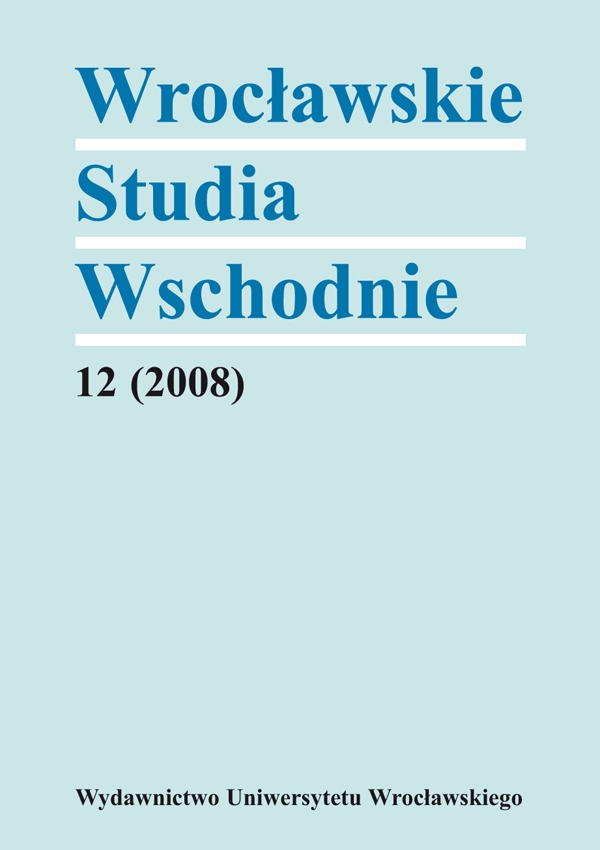

Articles [1033]

Деятельность Бюро Польской армии на эмиграции в 1941–1944 гг.
Бюро документов было самостоятельной организационной единицей в Штаб-квартире Польской армии, сформированной на основании польско-советского соглашения от 30 июля и военного договора от 14 августа 1941 г. на территории СССР. Бюро было создано приказом ген. Владыслава Андерса 15 апреля 1943 г. Раньше, с сентября 1941 г., в Штабе командования существовал Самостоятельный исторический сектор. Его задачей был
сбор информации об армии. Круг задач и структуру Бюро определил его командир, дипломированный подполковник Казимеж Рызиньски. Ввиду возобновления дипломатических отношений после вышеуказанного соглашения возникла необходимость ознакомиться с процессами ликвидации учреждений польского государства на восточных землях, присоединенных 1–2 ноября 1939 г., расширения на этой территории советского законодательства, репрессий по отношению к населению и четырех крупных депортаций в 1940–1941 гг. вглубь СССР. Сбор информации о дальнейших судьбах этого населения стал очередной задачей в работе Бюро документов. Для этой цели явившимся в армию приготовили „анкету”, содержащую учетные личные данные. Вторая „анкета” касалась семьи солдата.
Эвакуация Польской Армии в Иран летом 1942 г., одновременная эволюция позиции советских властей в отношении Правительству РП на эмиграции и репрессии по отношению к полякам стали причиной приказа Командира Армии от 19 декабря 1942 г. о проведении „анкеты среди солдат, женщин-добровольцев и ссыльных”. Для этого был подготовлен в Бюро документов опросный лист, содержащий четыре группы вопросов, на основании которых были приготовлены „анкеты”: „По вопросу плебисцита в октябре 1939 г.” и „Восточная Польша, оккупированная в 1939–1941 годы”, и разослан в мае–июне 1943 г. В 1943–1944 годы Бюро изменило подчинение и внутреннюю организацию ввиду изменений структур Войска Польского и перехода к боевым действиям в Италии. Это не повлияло на работу Бюро. В акте сдачи-приемки, когда 15 августа 1944 г. Бюро переходило под командование 3 Корпуса армии, были указаны: 20 готовых трудов, 15 томов сообщений 1975 авторов, 44 тома анкет 13 739, 7 томов депозитов 1981 поз., 36 томов разных документов 14 400 поз., 14 томов других анкет в том числе школьные работы юнаков и т.д., картотека личных статей 15 000, предметный каталог с 300 статьями и 120 иллюстрациями и рисунками, 162 книги по советологии на нескольких языках. Расформирование единиц Польской армии и сформирование 21 мая 1946 г. Польского корпуса приспособления и размещения оканчивает деятельность Бюро документов. Вся собранная уникальная документация исторических источников попала частично в коллекцию Владыслава Андерса, в акты посольства РП в Москве–Куйбышеве и в Министерство информации и документации. В 1946–1947 годы непосредственно из Каира и Рима она была передана в фонды
Hoover Institution on War Revolution and Peace в Станфорд СА.
The work of the Document Bureau of the Polish Army in exile between 1941 and 1944
The Document Bureau was an independent organisational unit at the Headquarters of the Polish Army established in the USSR on the basis of the Polish-Soviet treaty of 30 July and the military agreement of 14 August 1941. The Bureau was set up following an order issued by General Władysław Anders on 15 April 1943. Before that, from September 1941, there had existed at the Command Headquarters an Independent Historical Department. Its task was to collect information concerning the armed forces. The structure of the Bureau and the scope of its activities were defi ned by its head, lieutenantcolonel Kazimierz Ryziński. As the Polish-Soviet diplomatic relations were resumed following the treaty, there arose a need to learn more about the dismantling of the Polish state institutions in those regions of Poland that were incorporated into the USSR on 1–2 November 1939, about the introduction of the Soviet legal system into this area, about the repressions against the local population and about the four large deportations deep into the USSR between 1940 and 1941. Gathering information about the fate of this population was another task undertaken by the Document Bureau. To this end, volunteers wishing to join the army were given two questionnaires. The first contained their personal data, while the second concerned their families. The evacuation of the Polish Army to Iran in the summer of 1942 and the simultaneous evolution of the Soviet attitude towards the Polish Government-in-Exile as well as the repressions against Poles prompted the Army’s command to order, on 19 December 1942, a survey among soldiers, both volunteers and exiles. The Document Bureau prepared four groups of questions which became the basis of the survey: “On the plebiscite of October 1939” and “The occupation of Eastern Poland between 1939 and 1941”. The questionnaires were sent out in May–June 1943. Between 1943 and 1944 the Bureau was reorganised following the changes in the Polish Armed Forces and the fact that they joined the military operations in Italy. This did not affect the work of the Bureau. The acceptance protocol of 14 August 1944 made when the Bureau was transferred to the Command of the 3rd Corps includes: 20 ready papers, 15 volumes of reports 1975 authors, 44 volumes of questionnaires 13,739, 7 volumes of deposits 1981 items, 36 volumes of various documents 14,400 items, 14 volumes of other writings including the soldiers’ written assignments from school, index of people 15,500 entries, subject index 300 entries, 120 illustrations and drawings, as well as 162 books on Sovietology in several languages. The Bureau ceased its operation upon the disbanding of the Polish Army units and the establishment, on 21 May 1946, of the Polish Resettlement Corps. Some of the Bureau’s unique historic documents ended up in Władysław Anders’ collection, some in the Polish Embassy and Moscow and the rest in the Ministry of Information and Documentation. Between 1946 and 1947 the documentation was transferred directly from Cairo and Rome to the Hoover Institution on War, Revolution and Peace in Stanford, CA.